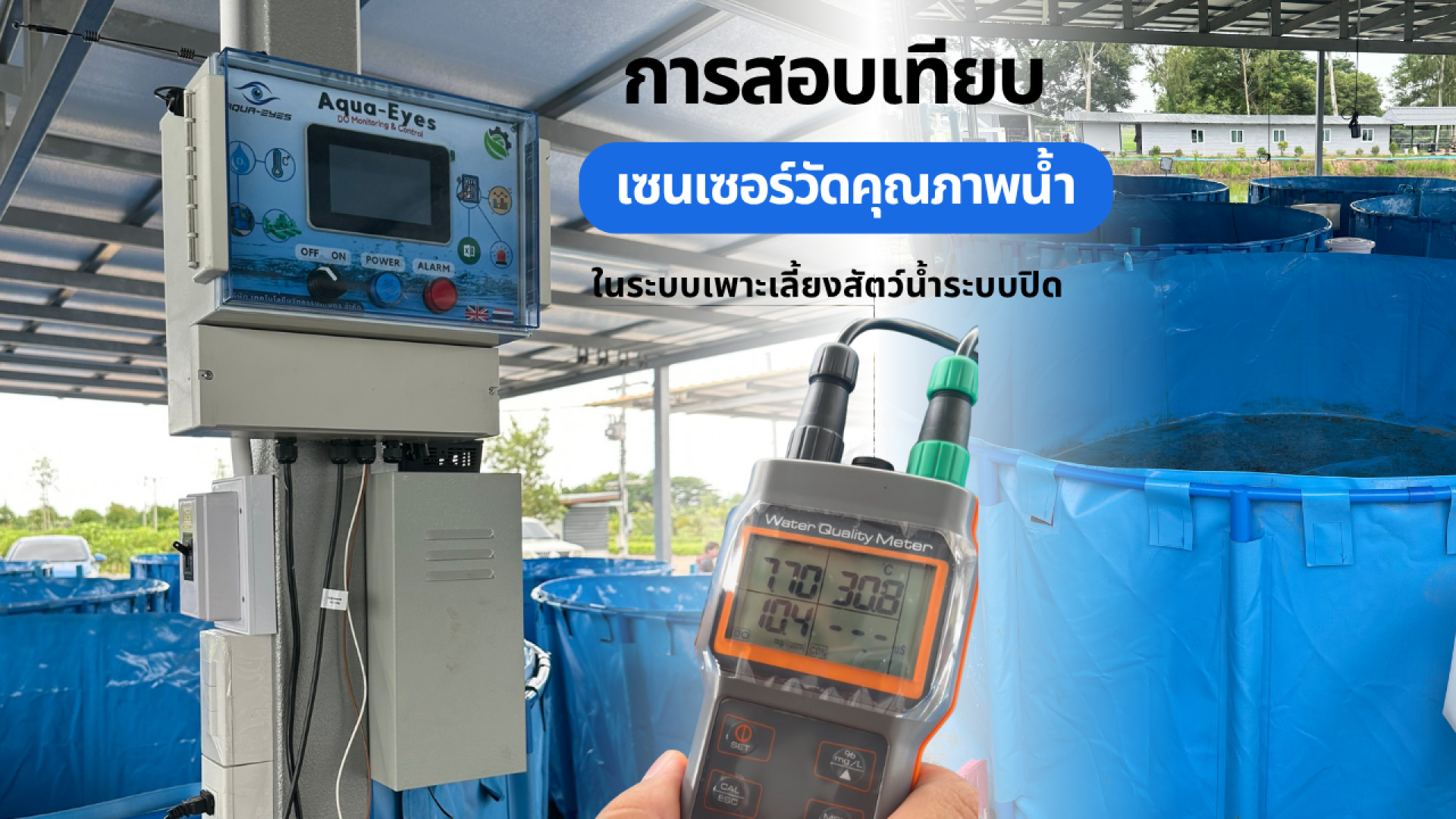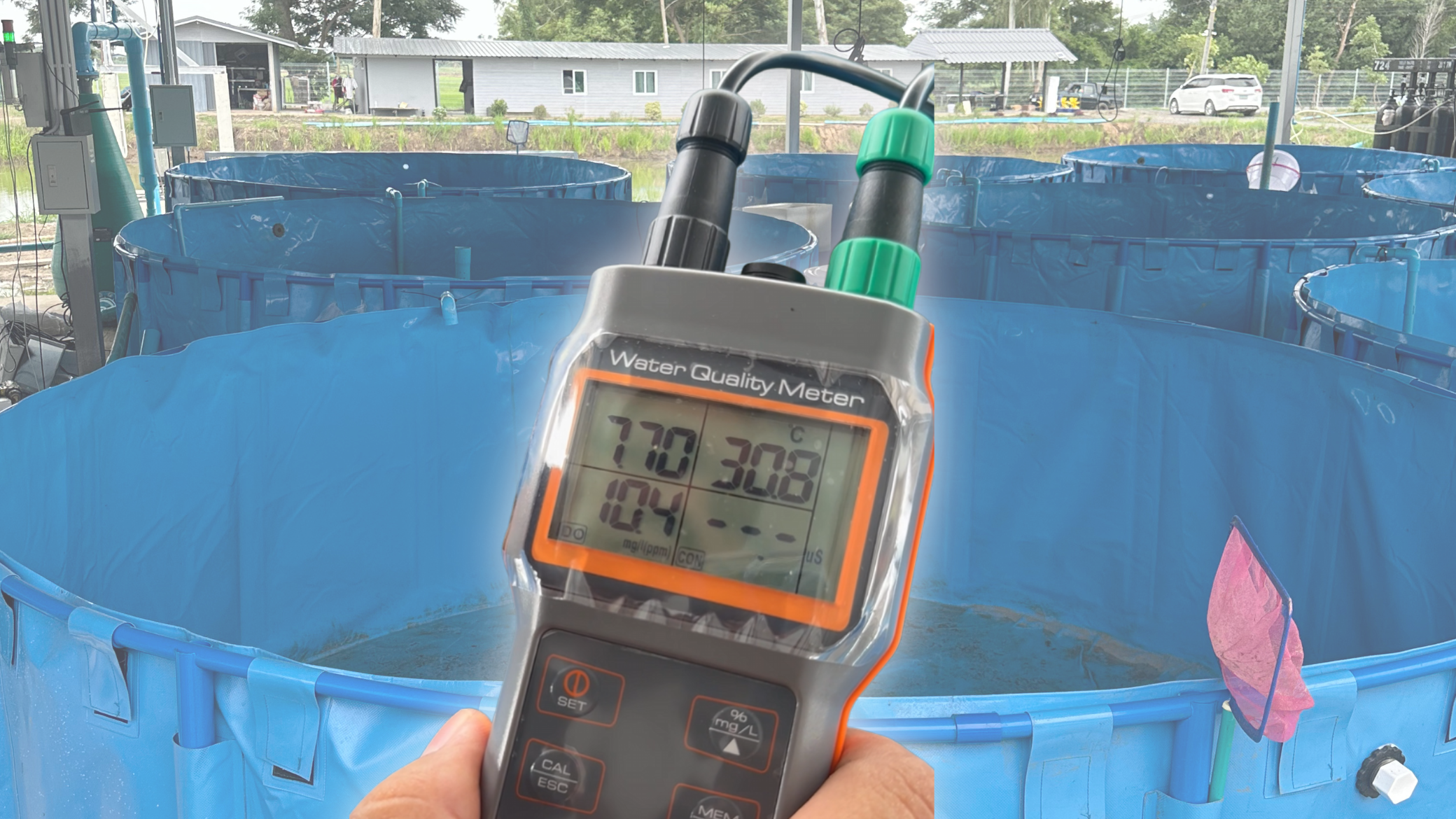Calibration of Water Quality Sensors in Recirculating Aquaculture Systems (RAS)

The Heart of a Sustainable and Accurate Recirculating Aquaculture System (RAS)
In the modern aquaculture industry, water quality control is a key factor that directly affects the health and growth rate of aquatic animals. This is especially crucial in Recirculating Aquaculture Systems (RAS), where water is continuously reused within the system instead of being replaced with external sources. Continuous water quality monitoring is therefore essential for efficient and safe system operation.
One of the most critical components of this system is the water quality sensorssuch as dissolved oxygen (DO) and pH sensorswhich must maintain high accuracy at all times. Sensor calibration is the process that ensures the precision of these devices.

Understanding Why Sensor Calibration Matters
Sensor calibration is the process of adjusting or comparing the sensors readings against an accepted standard reference to ensure the accuracy and reliability of measurements, even after prolonged use.
Factors That Affect Sensor Accuracy:
Wear and tear of sensor heads from prolonged use or chemical exposure
Fouling from scale or organic matter buildup
Fluctuations in temperature and pressure
Improper storage, such as allowing the sensor tip to dry out
If a sensor becomes inaccurate without notice, it can lead to poor decision-makinglike over-oxygenation or unnecessary pH adjustmentswhich can negatively impact aquatic health, increase operational costs, and damage equipment.
Key Sensors in RAS
1. DO Sensor Dissolved Oxygen Sensor
This sensor measures the amount of oxygen dissolved in water, which is vital for the respiration of aquatic animals. Low DO levels can stress aquatic life, reduce growth rates, or even cause death.
Calibration method:
Use oxygen-saturated water as the 100% reference point.
Some systems use optical sensors that offer high stability, but still require periodic calibration.
2. pH Sensor Acidity/Alkalinity Sensor
pH levels affect oxygen absorption, nutrient solubility, and the toxicity of ammonia. Maintaining the right pH level helps reduce stress and improves survival rates of aquatic animals.
Calibration method:
Use 2 or 3-point buffer solutions such as pH 4.01, 7.00, and 10.01.
Make sure to use non-expired buffer solutions stored under proper conditions.
Steps to Calibrate a Sensor
Prepare stable and certified standard solutions.
Clean the sensor probe to remove any fouling or contamination.
Immerse the probe in the standard solution and wait for a stable reading.
Adjust the sensor reading (if needed) to match the reference value.
Test the sensor's stability after calibration.
Benefits of Regular Sensor Calibration
Improves measurement accuracy
Reduces risk to aquatic life from false readings
Ensures reliable performance of automated control systems
Lowers operational costs by preventing unnecessary damage
Provides trustworthy data for long-term analysis and records
Boosting Efficiency with IoT Sensor Control Cabinets
To achieve precise and modern water quality management, installing IoT-enabled sensor control cabinets is an excellent way to elevate RAS operations.
Key Features:
Real-time water quality monitoring (DO, pH, etc.)
Automatic alerts via Line or Telegram when abnormalities occur
Remote control of equipment (e.g., aerators or water pumps) via mobile devices
Sensor data logging with Excel export capability
Expandable to additional sensors (e.g., temperature, ammonia, salinity)
Thanks to IoT technology, RAS management becomes more accurate, safer, and reduces the workload of system operators.
Sensor calibration is more than just a technical procedureit is an essential responsibility in maintaining a safe, efficient, and sustainable aquaculture system. When paired with IoT-based monitoring and automation, farmers can reduce risks, boost productivity, and move confidently toward next-generation aquaculture.


